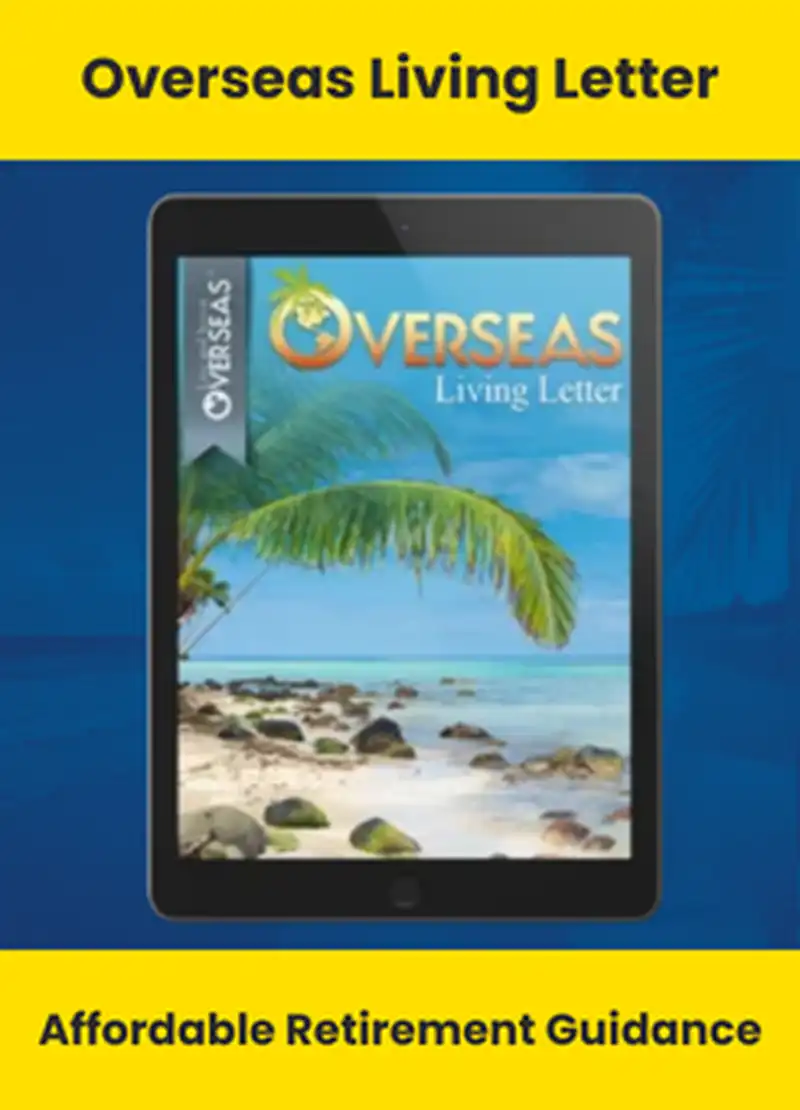I’ve been traveling internationally in earnest since I was 21.
It wasn’t until a decade later, though, that I expanded my horizons to include Asia.
My first trip to the other side of the world—to Hong Kong—made the point. Traveling to Asia isn’t the same as hopping down to Belize or Panama. You aren’t going to Thailand or Malaysia for the weekend.
Asia offers adventure and a strong dose of the exotic… plus some of the world’s best beaches… all at what can be disarmingly low prices.
It’s a part of the world worth getting to know. If you’re considering a first visit, here are 14 tips to help you have the most enjoyable experience possible…
#1: Don’t underestimate the jet lag.
When you arrive in Southeast Asia, you’ll have flipped about 180 degrees on time, a good 50 degrees Fahrenheit in temperature, and about 50% (or more) in humidity. It takes about one day to recover from each hour of time change. You’ll feel foggy for days. The first few days can be a challenge. I recommend keeping them low-key. Give your body and your mind a chance to adjust.
#2: Eat local yogurt after you arrive… and take probiotics.
During Lief and my trip along the Silk Road two years ago, we ate lots of foods my body had never encountered before… and, by our second week, I was very, very sick. The doctor I saw in Shanghai recommended yogurt and probiotics as part of my treatment… and suggested that I take both as prophylactics before and during any future travel in that part of the world… even in less remote regions.
#3: Eat at busy places.
The locals know the best restaurants.
#4: Watch out for “copies.”
Genuine Rolex watches and North Face backpacks never cost US$20. If a vendor says that an English-language DVD, book or an inexpensive iPhone is not a copy but is “made in Vietnam” (or Thailand or Malaysia, etc.), it is probably a copy. If the photos and maps in the guidebook at the bookstore are in faded black and white, it’s a copy.
#5: Refunds aren’t common.
Once the money leaves your hands, even if just for a moment, it’s gone.
#6: As much as possible, pay with exact change.
Vendors may not have any.
#7: Negotiate the fare before getting into a tuk-tuk, taxi, or songthaew.
When possible, ask a local first how much the fare should be, so you have an idea what to expect.
#8: Don’t agree to purchase something until you’ve agreed the price.
#9: Remember to smile.
Arguing or being disagreeable will get you nowhere.
#10: Don’t trust a woman who tells you that she loves you before she learns your name.
This might be good advice anywhere in the world.
#11: Always carry toilet paper.
Even when using the bathroom in the lobby of a five-star hotel.
Beyond the top-level international-standard hotels, for sure, you will not find toilet paper in the toilet areas. Bring your own.
#12: Download a voice translation app.
Outside the major cities across the region, you’ll find that few people speak English. In rural areas, no one does.
You can get by using hand gestures, pantomime, and lots of smiles and bows.
For numbers, you can use the calculator on your phone.
However, if you need to have a conversation (with a pharmacist, for example, or a clerk in a shop), you can use a voice translation app. Many locals you encounter will have one downloaded on their phones. You should download one, as well. I use iTranslate.
#13: Don’t be surprised if the eating utensils aren’t what you’re used to.
In Thailand, for example, meals are served with a fork and tablespoon. The spoon holds the food and goes into your mouth. The fork is used only to push food onto the spoon. It’s considered rude to put a fork in your mouth. When in doubt, mimic what other diners are doing.
In Vietnam, food is eaten with chopsticks. Soup comes with chopsticks and a spoon.
#14: Beef means red meat, and chicken means bird. Fish can be anything from anchovies or carp to grouper or cod. Pork means pig meat.
If you really want to know what you’re being served, order pork. Otherwise, you may end up with some kind of red meat that definitely doesn’t taste like cow or be served chicken legs that came from a “chicken” of monstrous proportions (“That chicken!” they will assure you.)
Sincerely,
Kathleen Peddicord
Founding Publisher, Overseas Opportunity Letter












